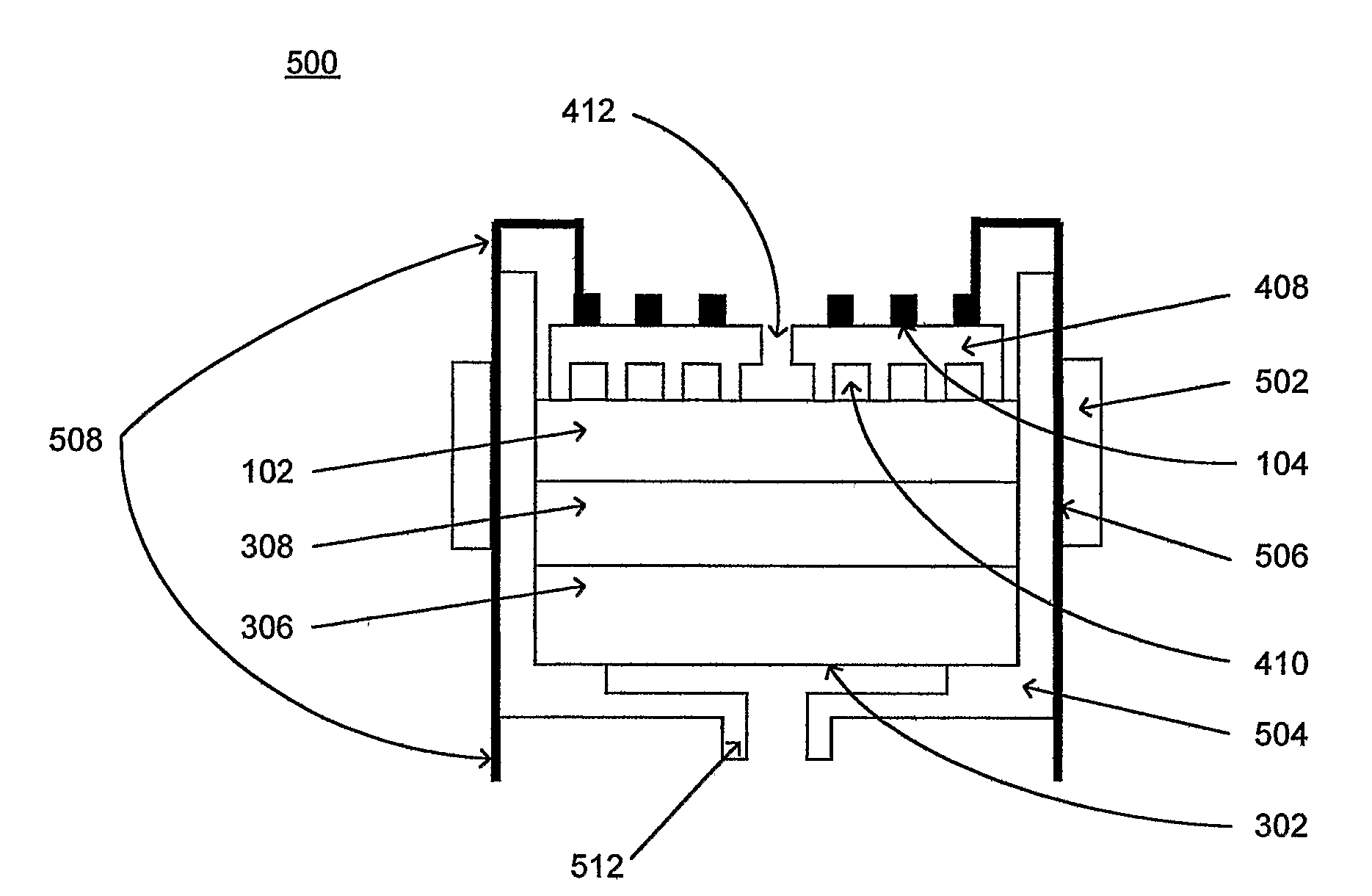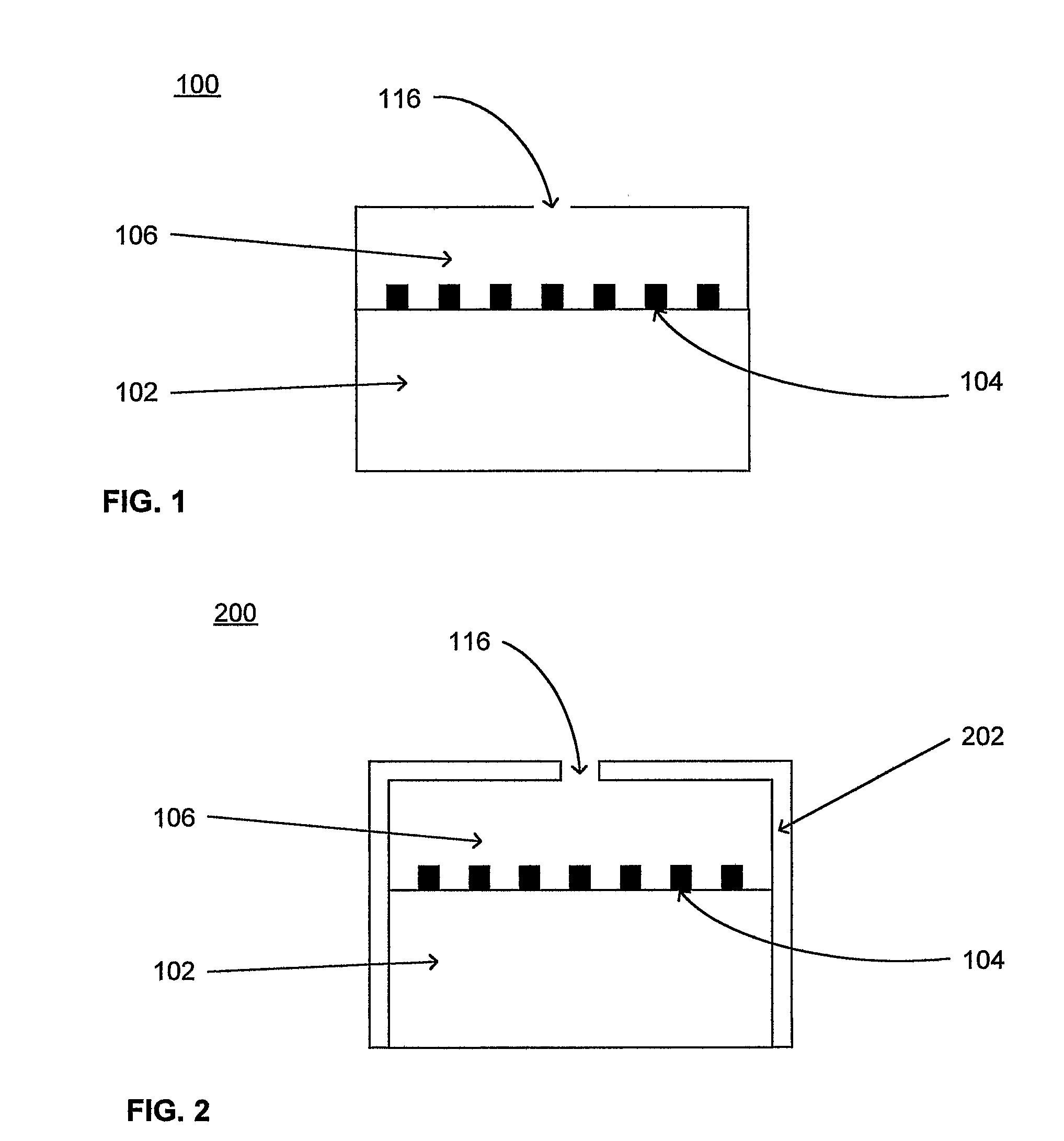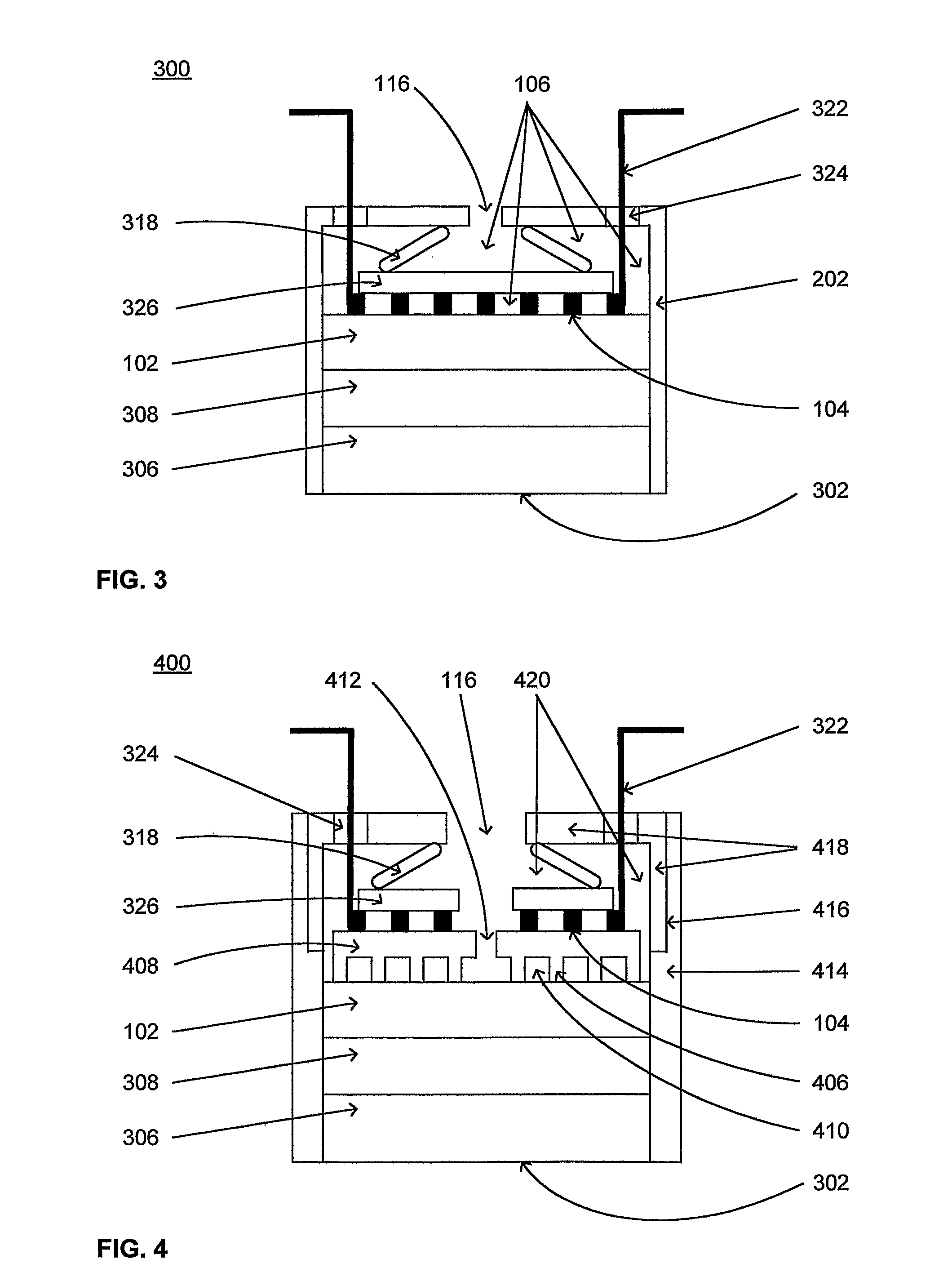Capillary force vaporizers
a technology of capillary force and vaporizer, which is applied in the direction of positive displacement liquid engine, steam boiler components, water circulation, etc., can solve the problems that the seal capillary pump of the prior art cannot be readily disassembled and reassembled, and achieves high elastic modulus, reduce cost, and facilitate the assembly of device components
- Summary
- Abstract
- Description
- Claims
- Application Information
AI Technical Summary
Benefits of technology
Problems solved by technology
Method used
Image
Examples
example 1
[0074]A capillary force vaporizer module was manufactured according to the embodiments of the present invention as shown in FIG. 4. The diameter of porous member 102 was 19 mm and its thickness was 1 mm. The external diameter of the device was about 30 mm. The porous member and insulator component were fabricated from highly porous alumina using known techniques. See, for example, U.S. Pat. No. 6,585,509 and U.S. Pat. No. 6,634,864. The vaporizer material had a mean pore size of about 1 micron (μm) and the total porosity was about 80%. The insulator component had a mean pore size of about 20 μm and the total porosity was about 80%. The heat exchanger component was manufactured from approximately 96% dense aluminum oxide, and the material, design and manufacturing methods were similar to those used to manufacture the orifice component in prior art CFV devices.
[0075]The external housing in Example 1, which comprised upper and lower housing sections, was made from Teflon plastic by sta...
examples 2a and 2b
[0079]A capillary force vaporizer module was manufactured according to the embodiment of the present invention shown in FIG. 5A. Both the outer and inner housing components, corresponding to 502 and 504, respectively, of FIG. 5A, in Example 2a were machined from aluminum metal, and a simple set screw was used to hold the components together. The capillary force vaporizer module of this example was connected to a 200 watt power supply that was controlled by a software program via computer interface, thus forming an integrated capillary force vaporizer system as shown in FIG. 8. Using distilled water as a test liquid, the device was operated successfully over a wide range of power settings similar to Example 1 above and the performance characteristics were recorded. Within the margins of measurement errors, the device performance characteristics were found to be essentially identical to those of the present invention device of Example 1, as shown in Table 1, with the exception that th...
example 3
[0081]Next, a complete vaporization system as shown in FIG. 7 was assembled as follows. The liquid supply component was removed from the capillary force vaporizer of Example 2b. A custom fitted liquid supply component made from the same material was machined so that one end of the liquid supply component fit directly into the end of a polyethylene liquid supply hose that was connected to a flexible gravity feed reservoir. The other end of the liquid supply component was machined to fit directly into the bottom of the capillary force vaporizer such that when fully assembled, the capillary force vaporizer was connected directly to the liquid supply hose using the liquid supply component to hold the system together.
[0082]The system and device of Example 3 was operated successfully over the same range of conditions as in Example 1, and, within the measurement errors, the performance characteristics were essentially similar to those shown previously in Table 1 for Example 1 as well as Ex...
PUM
| Property | Measurement | Unit |
|---|---|---|
| Weight | aaaaa | aaaaa |
| Porosity | aaaaa | aaaaa |
| Porosity | aaaaa | aaaaa |
Abstract
Description
Claims
Application Information
 Login to View More
Login to View More - R&D
- Intellectual Property
- Life Sciences
- Materials
- Tech Scout
- Unparalleled Data Quality
- Higher Quality Content
- 60% Fewer Hallucinations
Browse by: Latest US Patents, China's latest patents, Technical Efficacy Thesaurus, Application Domain, Technology Topic, Popular Technical Reports.
© 2025 PatSnap. All rights reserved.Legal|Privacy policy|Modern Slavery Act Transparency Statement|Sitemap|About US| Contact US: help@patsnap.com



